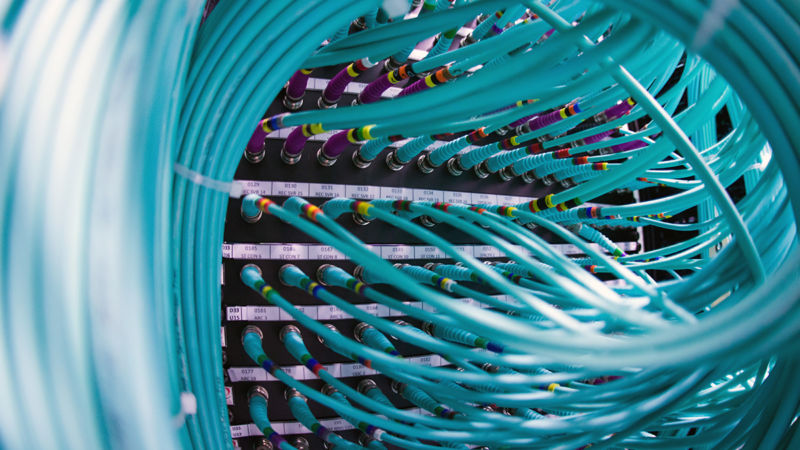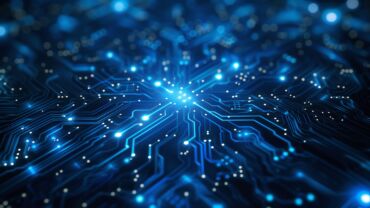Today organizations are constantly dealing with many challenges associated with global trade like product classification, license management, shipment tracking and overall compliance management. These areas can be managed efficiently with the help of the latest technology and automation.
Artificial Intelligence (AI), Blockchain, and the Internet of Things (IoT) are very common terms when we talk about the future of technology And today we cannot even imagine automation without these emerging technologies as they drive innovation for a better future. Much of our day-to-day in some way or the other, is getting impacted with these technologies, and global trade is no exception. These emerging technologies are playing an important role in improving the overall global trade processes by making them less complex and powering global trade with robust solutions, including machine learning.
Artificial Intelligence (AI):
Unlike traditional ERPs and software, which performs only within the parameter of defined functions, Artificial Intelligence (AI) or Machine Learning allows a system, or a chain of systems, to learn constantly from experience during various transactions and make the necessary changes for a better future output . AI is tremendously helpful in handling various cumbersome tasks such as the classification of goods, predicting customer demands, order management, and many more. AI is highly capable to bring about efficiencies to the overall global trade process, and potentially reducing some of the costs associated with inefficient processes. AI can also learn to identify unsecure or inaccurate transactions, as well as identify the parties in a transaction that might be on a watch list, posing risk to a company’s supply chain if they do business with this partner. In this instance, AI will notify the respective stakeholders and government authorities in time for appropriate action. Supported with right information at the right time, stakeholders and government authorities can take immediate action to prevent transactions of a vicious nature or inaccurate conclusion.
Below an example of how AI is helping global trade today:
- 3CE, which is a Montreal-based global trade management (GTM) software company that has developed a system specialized in automating the processes of Harmonized System (HS) commodity classification and HS code verification using AI1.
- In a World Customs Organization classification competition, 3CE achieved a score of 93 percent, government experts averaged 77 percent accuracy and experts from the private sector averaged at 68 percent.
Blockchain:
Blockchain is the talk of the town due to its groundbreaking capabilities to secure data and transactions through distributed ledger systems. Blockchain was originally designed to support the development of Bitcoin and awareness of this technology picked up steam because of Bitcoin’s dependency on blockchain. Blockchain maintains permanent, tamper-proof lists of records, bundles them into blocks, and chains them together where they are distributed through a peer-to-peer network. Each block is assigned a timestamp and link to the prior block, so all transactions are recorded chronologically. Whenever there is a change to the information, those changes are recorded across the blockchain, making the process transparent and impervious to fraud. In my world, this translates into data with improved visibility to all decisions, full auditability and great recordkeeping.
Today most industries and governments are exploring the potential applications of Blockchain technology and I believe it has solutions to some of the major challenges in global trade. For example, in the United States, Customs and Border Protection (CBP) launched a pilot using blockchain technology for the certificates of origin under NAFTA and CAFTA-DR.
Global trade comprises numerous stakeholders such as importers, exporters, brokers, shipping agents, banks, port authorities, customs and various partner government agencies. These stakeholders play an important role in the process of any import or export transaction with the risk for loss or manipulation of critical information. This type of activity can set a company up for failure leading them to enforce strict compliance checks to eliminate delays in shipment movement and issues with clearance at ports. Because of blockchains capabilities for data security the information is securely managed through centralized controls and cryptography throughout multiple computers, synchronizing the information or documents simultaneously, preventing any type of tampering and manipulation to the data.
This secured and undistorted information facilitates the generation of authenticated documents and a seamless flow of data which reduces the risk of non-compliance. Following are some of examples how Blockchain being used by organizations currently:
- Last year IBM and Maersk shipping line joined up in developing a Blockchain solution to manage and track documentation for millions of containers moving globally2.
- Barclays Bank reported the first blockchain-based, trade-finance dealing September 2016 for USD 100,0003.
- Infosys Finacle pioneers Blockchain-based trade network in India in consortium with seven leading banks4.
Above examples clearly shows that organizations have already started adopting this revolutionary technology and we are going to see more such examples in future.
Internet of Things (IoT):
Another emerging technology is the Internet of Things (IoT), which is basically referring to the network of physical devices (i.e. vehicles, home appliances) embedded with electronics, software and sensors that when connected with each other can share information. Vehicles using GPS technology to keep track of location, and devices using sensors to maintain temperature or security are some of the examples.
By using the IoT in the company’s supply chain, there is greater shipment visibility; subsequently helping the stakeholders in their planning process. The IoT can also help port authorities with better vessel management and in their efforts to decongest the traffic at ports. Below are some examples for IoT applications:
- Modum, a Swiss startup uses IoT with Blockchain to ensure maintenance of correct temperature for pharmaceutical products during transit5.
- Maersk shipping line allows users to track containers with IoT through their Remote Container Management system6.
Recent developments in the global trade ecosystem is indicating a growing interest from governments and organizations to embrace these emerging technologies due in part to their obvious benefits. Within global trade compliance there are many challenges to adopting these emerging technologies as this is an area of the supply chain that is highly vulnerable to geopolitical events and risks. Global trade compliance relies on the integration of government systems, organizations in different countries, and from service providers to achieve the required automation and new technology to support global trade.
I believe it is a high time when governments and organizations from different countries find a common platform and work together to make global trade easier and safer through the use of modern technology and innovation.
===========================================================================
- https://www.forbes.com/sites/stevebanker/2017/10/07/global-trade-is-powered-by-artificial-intelligence/#5359682e3d34
- https://www.reuters.com/article/us-banks-barclays-blockchain-idUSKCN11D23B
- https://www.maersk.com/solutions/shipping/remote-container-management








